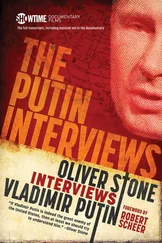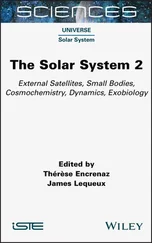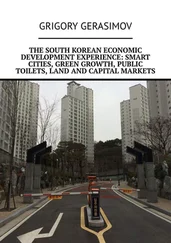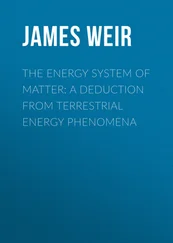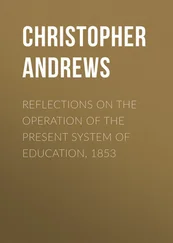Finally, enormous uncertainty was caused by the de jure dissolution of the Soviet Union while retaining de facto, for a certain period of time and without any special agreements about it, a shared currency, a shared customs control, and a jointly managed transportation and energy infrastructure. [5] In the fall of 1991, I drafted an agreement on the economic union of the newly independent states—the former Soviet republics. That treaty envisioned the preservation of a joint currency, the establishment of a free trade zone, a joint customs control, continued cooperation among factories and firms of the former Soviet Union, harmonization of economic legislation across these countries, and other measures. The treaty was signed at the highest level of the Kremlin, with the participation of Mikhail Gorbachev and representatives of the leadership of thirteen out of fifteen former Soviet republics, including Ukraine and Kazakhstan (and with the exception of Azerbaijan and Georgia). The Baltic states also signed that treaty as observers. More than sixty rule-making acts needed for the implementation of this treaty were prepared and approved by the governments of the signatory states. However, the Belaya Vezha agreements on disbanding the union made it impossible to continue this work.
In turn, the lack of clarity about the legal basis for managing these shared systems led to the same preponderance of individual, personalized deal-making over legal norms and to a misperception of democracy as the freedom of will exercised in the absence of appropriately established, stable, and universally applicable rules and procedures.
Even this incomplete list of issues shows that the political formation spontaneously emerging out of the breakdown of the Soviet system of governance had no central organizing principle and would not be able to stabilize itself either in the short term or in the long term. To gain at least some relative stability, it had to evolve, one way or another. Only through change could it transcend its most acute contradictions and acquire some routines that would help to prevent wild, unpredictable swings from one side to another. And, essentially, this evolution constitutes the gist of the first stage of Russia’s post-Soviet political history, comprising most of the 1990s.
The first and arguably the most important choice that had to be made during this historically important period was the choice between a competition-based and an authoritarian political system. I believe that this choice was more or less completed with the adoption of Russia’s new constitution, between October and December 1993, and then finalized on the eve of and during the presidential election of 1996, when Yeltsin was reelected, and in its aftermath. Those years made it clear that, even though political pluralism was being preserved and there were at least a few groups within the elite, each represented by a team of political players, the instruments of political power actually were not divided and distributed among these groups to even a minimally necessary extent. Without such a distribution of power resources, mutual checks and balances cannot function.
The degree of concentration of resources in the hands of the dominant elite group that coalesced around the presidential staff of Boris Yeltsin was sufficient to enable it to manipulate all other groups and to prevent them from getting an opportunity to assert any practical influence upon government, let alone to be able to replace it in the Kremlin. After some serious hesitation, this ruling group finally decided to hold the presidential elections in 1996, and, formally speaking, this implied the possibility of a nonviolent but still involuntary replacement of this group of people in power. Yet, in spite of this decision, there was only one election outcome that the ruling group deemed acceptable: the victory of Boris Yeltsin. And they secured this outcome with the highest degree of certainty, by using every kind of power resources that they had at their disposal.
Needless to say, those who now, for whatever reason, present the 1990s as a period of unprecedented blooming of democracy in Russia (in a positive value–laden sense of this term) tend to omit the fact that no one within Russia’s ruling circle at the time accepted the possibility of voluntarily relinquishing power to another group of people on the basis of its winning more votes than were going to be won by Boris Yeltsin.
When running for Russia’s presidency in the 1996 election, I saw this attitude of the ruling circle and took it into account. My goal was to bring substantial modifications to Russia’s policies. I saw the purpose of my campaign as stopping the formation of an oligarchical system based upon the fusion of private business, property control, and political power, as well as standing up against corruption and the war in the North Caucasus. I was going to do it by offering an alternative to Boris Yeltsin’s semicriminal economic policies, including his fraudulent loans-for-shares auctions, which handed large numbers of shares in Russia’s major companies to a few well-connected banks in exchange for their loans to the government.
On this basis, I intended to come in third in the race (after Yeltsin and the Communist candidate, Gennady Zyuganov). Then I was going to put forward the condition for my support for Yeltsin in the runoff, namely, my appointment as prime minister, with the goal of introducing significant changes in economic and personnel policies. This was the only realistic chance to modify Yeltsin’s course of action in politics and in the economy. But this opportunity was blocked by the oligarchical group of Anatoly Chubais and Boris Berezovsky. They did this by pumping up the media and pouring financial resources into the presidential campaign of General Alexander Lebed, making sure that he ended up with the third-highest number of votes and then, almost immediately after the election, destroying him as a politically significant player.
Of course, it is hard to tell which methods would have been used by Russia’s ruling circle had it not been able to secure the outcome that was acceptable to it by employing the resources they had used already. In fact, neither is it fully clear which resources they did in fact use, and to what extent, to ensure the predictability of the outcome. This is not quite clear even today, nearly twenty years after those elections—the first-ever Russian elections that, in theory, could have sealed the fate of the ruling circle. From time to time, key protagonists of that period have hinted at the existence of some mysteries or, at the very least, something that has not been fully spelled out with regard to the run-up to the election and the contingency plans that were made for the eventuality that the election did not go their way. Regardless, I am sure that the ruling circle did not view the possibility of transferring power to another group, based on the outcome of those elections, as something realistic. Thus, already at this point, the first and foremost feature of an authoritarian political system took shape: the impossibility that the efforts of those outside of the dominant group could replace one group in power with a different group “from below,” in a peaceful and legitimate fashion.
Let me reiterate: this does not mean that such a power transition is precluded on paper. A great many authoritarian regimes hold periodic elections for various levels of government so that, in theory, the possibility of an opposition victory in those elections cannot be ruled out. Yet, as long as a group of people ensconced at the height of power (most often united around an actual or an ex officio leader) has monopolized control over administrative power and over armed agencies, such a group has the real power to eliminate the probability of being ousted. Under such circumstances, even if an opposition gains the support of the majority of voters, this never leads to an official admission of defeat by the incumbent rulers nor to any practical implications in terms of a transfer of power.
Читать дальше

